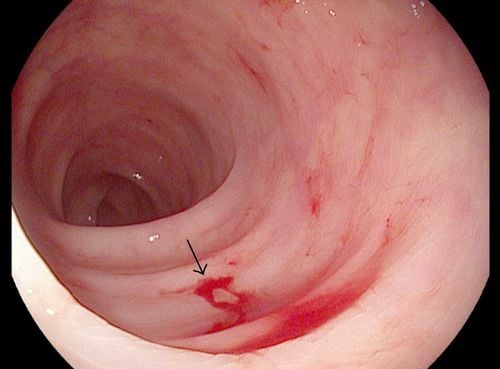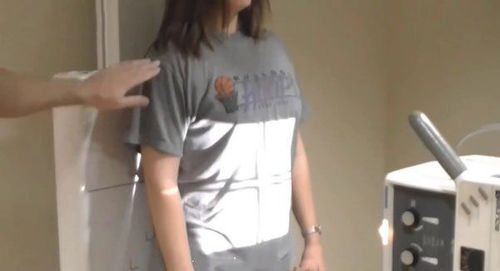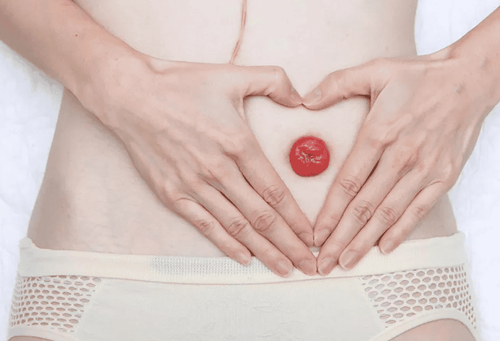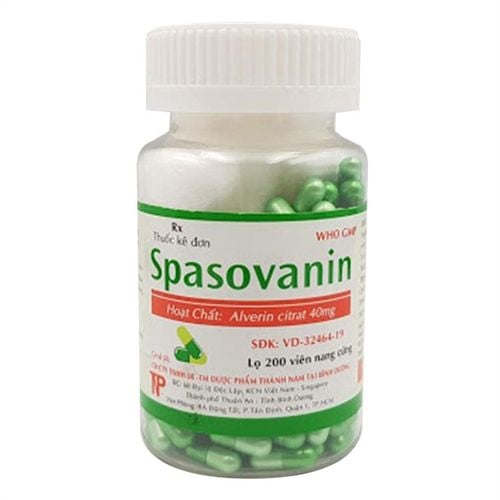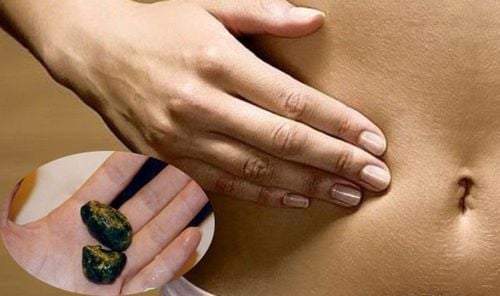This is an automatically translated article.
The article is expertly consulted by MSc Duong Xuan Loc - Gastroenterologist - General Surgery Department - Vinmec Danang International General Hospital.Intestinal obstruction is a common surgical emergency in abdominal emergencies. Intestinal obstruction can have many causes. The treatment of intestinal obstruction is mainly surgery and resuscitation to correct the systemic disorders caused by intestinal obstruction, rule out the cause of the obstruction.
1. What is an intestinal obstruction?
Intestinal obstruction is a process where the movement of substances in the intestinal lumen is stopped, this is a common surgical emergency, accounting for 9 - 19% of abdominal emergencies and 0.8 - 1.2% of surgical diseases. .Substances in the intestinal lumen:
Small intestine: Food in the process of digestion, absorption, digestive juices Large intestine: Gas, stool Intestinal obstruction occurs at all ages, in both sexes, but each age has its own characteristics. different common causes. Intestinal obstruction is usually divided into 2 types:
Functional intestinal obstruction: accounted for 3 - 5% Mechanical intestinal obstruction: More common, accounting for 95 - 97%.

2. Pathogenesis of intestinal obstruction
2.1 Mechanical Intestinal Obstruction A mechanical obstruction is a physical barrier that blocks or restricts the flow of matter through the intestines. Includes:Due to adhesions, or tissues that may develop after abdominal or pelvic surgery Gastrointestinal tumors Ingestion of foreign bodies, foreign bodies in the intestinal lumen (Ascariasis bunions, food residues, hair tumors,... ) Gallstones , although this is a rare cause of intestinal obstruction Hernia (strangulated inguinal hernia, strangulated femoral hernia,...) Infection Inflammatory bowel disease (IBDs) Intussusception Meconium plug syndrome ( Meconium is the first type of stool that an infant passes out) Tumor Torsion of the small intestine: Torsion of the small intestine because the loop of the small bowel is still attached and fixed, the loop is filled with worms Torsion of the colon Sigma: Because the colon is too long for mesenteric roots, chronic constipation, colon contains many faeces. 2.2 Functional intestinal obstruction Functional intestinal obstruction is caused by non-mechanical obstructions such as spasm (seen in nerve damage, lead poisoning) or paralytic ileus (causes of intestinal paralysis such as: Peritonitis: peritonitis) , spinal nerve damage, retroperitoneal hematoma, systemic infection).
Functional intestinal obstruction occurs when there is an abnormality that disrupts the functioning of the entire digestive system. The large and small intestines move through coordinated contractions. If this process is disrupted, a functional bowel obstruction may occur. However, some chronic diseases can also cause functional bowel obstruction.
Causes of functional bowel obstruction include:
Abdominal or pelvic surgery Diabetes Electrolyte imbalance Hypothyroidism Congenital hypertrophy (Hirschsprung's disease) Infection Certain nerve and muscle disorders, such as Parkinson's disease Opioid drugs.

3. Treatment of intestinal obstruction
3.1 Principles of treatment Surgical treatment combined with surgical resuscitation before, during and after surgery lies in correcting systemic disorders caused by intestinal obstruction (water and electrolyte disturbances) and eliminating the cause of obstruction, restoring intestinal regurgitation.3.2. Treatment of systemic disorders caused by intestinal obstruction. Infusion of fluids and electrolytes according to electrolytes, plasma, and blood. Gastrointestinal aspiration, must be done immediately: Insert a nasogastric tube to aspirate fluid above the obstruction. Antibiotics and supportive drugs, corticosteroids, pain relievers... 3.3. Surgical treatment to solve the cause of obstruction, restore intestinal circulation 3.3.1. Endotracheal anesthesia with muscle relaxant Incision: depending on the abdominal condition to decide laparoscopic or open surgery as well as the location of laparotomy
If the cause of the obstruction is known, the incision depends on the location of the cause and planned surgery. If the cause is not clear, the white line should be used between upper and lower umbilicus Probe
Find the location of the blockage Evaluate the lesion Treat the cause of the intestinal obstruction
Foreign body in the intestinal lumen: Push the foreign body when the foreign body is near the ileum colostomy or colostomy to remove foreign body: operate under the obstruction, remove the foreign body and then suture. Inguinal and thigh hernia strangulation: Must treat strangulated intestine, then suture to restore abdominal wall. Intussusception : In children: remove the intussusception and fix it. If the intussusception cannot be removed or if the bowel is necrotic, the bowel should be resected. Adults: remove the cage, fix the ileum to the colon, the cecum to the abdominal wall, and remove the appendix. If tumor is present, resection of bowel with tumor or anastomosis. Bowel volvulus: Untwist and remove the cause of torsion: Colon Recurrence intestinal obstruction requires repeated surgery, after resolving the cause of intestinal obstruction, the bowel must be fixed. Performing bowel fold surgery or creating an ordered bowel adhesion without angulation is often the result of multiple adhesions postoperative intestinal obstruction.
Please dial HOTLINE for more information or register for an appointment HERE. Download MyVinmec app to make appointments faster and to manage your bookings easily.





